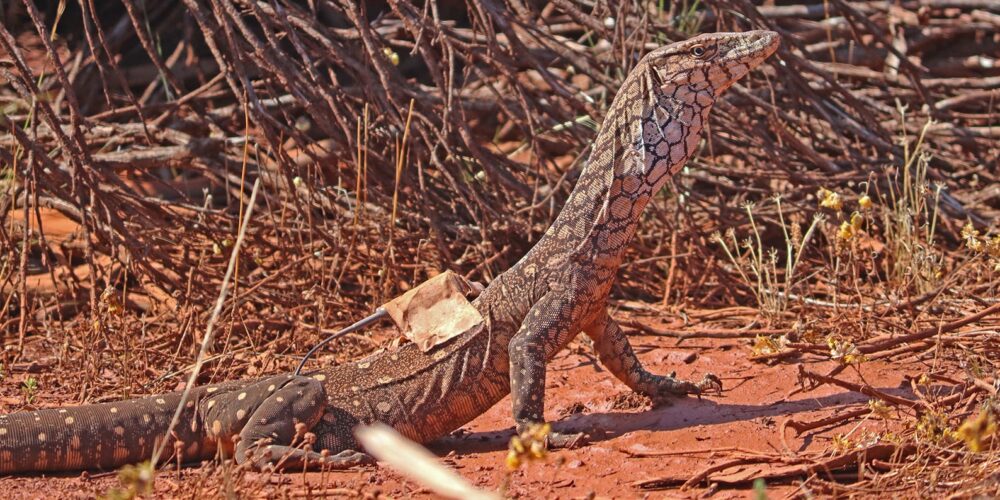Curtin researchers track lizard to assess mine site restoration effectiveness

Curtin University scientists have attached a tracking device to the back of a perentie, Australia’s largest goanna species, in order to assess the native animal’s response to and use of a restored former mine site in the Mid-West of Western Australia.
The study, published in the Australian Journal of Zoology, successfully applied the Time-Local Convex Hull method to analyse how the animal moved through habitats and behaved in its home environment.
Using this method, the study found that although restoration of degraded landscapes following mining activities was supporting use by the perentie, these restored landscapes appeared to lack key resources such as refuges, a critical resource for reptiles which rely on their environment to regulate their body temperature.
Lead author PhD candidate Sophie Cross from the ARC Centre for Mine Site Restoration (CMSR) in Curtin’s School of Molecular and Life Sciences said understanding how animals respond to habitat change and restoration was key to facilitating their conservation into the future.
“The goanna was tracked for three weeks until it shed the VHF/GPS tracker. We used the Time-Local Convex Hull method of analysis, which we found provided an effective measure of how animals use and move through restored landscapes,” Ms Cross said.
“We found the perentie used restoration areas with increased selectivity, and only ventured away from its burrow briefly and for short distances. It needed to return frequently to its burrow within the restoration area between foraging trips, presumably to regulate its body temperature and avoid overheating.
“Although it also had a burrow within the reference or unmined vegetation areas, it didn’t need to return to this as often as there tended to be more vegetation cover and refuges. There were also parts of the restored area that the perentie completely avoided – like the top of the restored waste rock dump.”
Ms Cross said understanding how animals behaviourally respond to habitat restoration was critical to their conservation in the face of ever-increasing rates of habitat destruction.
“Our research found that the Time-Local Convex Hull method will aid in understanding the complex processes underpinning the responses of animals to habitat change, increasing conservation outcomes of restoration projects from a range of degrading processes, such as mining, agriculture and forestry,” Ms Cross said.
The research was co-authored by a team including Dr Sean Tomlinson and Associate Professor Bill Bateman, both from Curtin’s School of Molecular and Life Sciences, and was funded by the Ecological Society of Australia & Holsworth Wildlife Research Endowment and the Australian Research Council Industrial Transformation Training Centre for Mine Site Restoration.
The full research paper, ‘The Time Local Convex Hull (T-LoCoH) method as a tool for assessing responses of fauna to habitat restoration: a case study using the perentie (Varanus giganteus: Reptilia: Varanidae),’ can be found online here.



